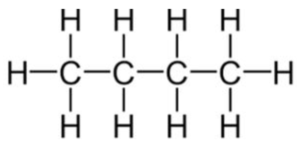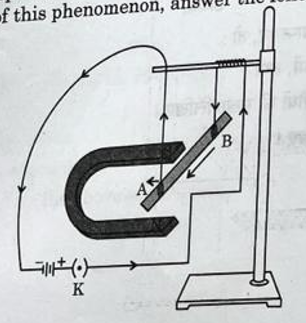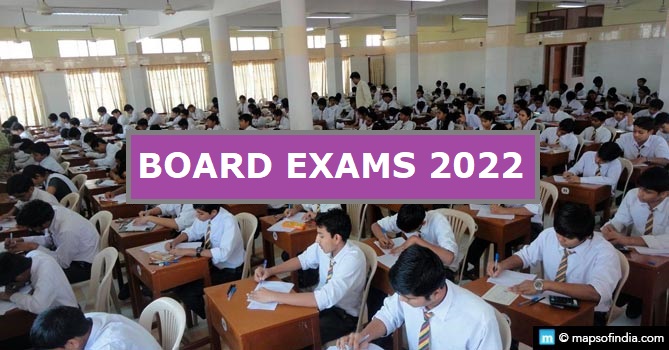The CBSE term 2 Science exam 2022 for Class 10 concluded today at 12:30 pm, with students coming out from the centers happily and stating that the exam was set on expected lines.
Teachers believed that the question paper was easy to solve with dedicated minutes to revise. For many, the exam finished 30 minutes prior, while others completed timely.
Students said that the paper was designed in accordance with the syllabus and they hope to get good marks as per their attempts in the Science exam.
Science (Class 10) Term 2 Question Paper 2022
SECTION -A
1. (i) Write the electronic configuration of element X, given by its symbol as under :
4020 X
Ans: Electronic configuration of element X (with atomic number – 20) is 2, 8, 8, 2.
(ii) Determine its position in the modern periodic table.
Ans: It belongs to the 2nd group and 4th period of the modern periodic table.
(iii) What is the nature of its oxide ?
Ans: It will form basic oxides as it is metallic in nature.
(iv) Name one other element of its group.
Ans: Magnesium (Mg)
2. (i) Write the name and draw the structure of a saturated hydrocarbon with four carbon atoms.
Ans: Name: Butane
Structure:

(ii) Write the number of single covalent bonds present in this compound.
Ans: 13 single covalent bonds
3. (a) Name the reproductive and non-reproductive parts of bread mould (Rhizopus).
Ans: Reproductive parts of bread mould (Rhizopus) – Sporangium
Non-reproductive parts of bread mould (Rhizopus) – Hyphae
(b) List any two advantages of vegetative propagation.
Ans: Two advantages of vegetative propagation:
(i) Helps in growing seedless plants.
(ii) Helps in preservation of the characters of the parent plant.
4. (a) State one drawback of each of the following :
(i) Oral contraceptive pills
Ans: Oral contraceptive pills: It may disturb normal ovulatory menstrual cycles.
(ii) Copper-T
Ans: Copper-T: It cannot prevent sexually-transmitted diseases.
(b) Under which category of contraceptive methods, is the use of condom kept ? In what way, its use is better as compared to other methods of contraception ?
Ans: Use of condoms is kept under Barrier Method.
Use of condoms is better as compared to other methods of contraception due to the following reasons:
(i) It helps to prevent the sexually-transmitted diseases.
(ii) It does not interfere with the normal menstrual cycles in females.
5. (a) Name the poles P, Q, R and S of the magnets in the following figures ‘a’ and b’ :
Ans: (a) Names of poles:
Figure a:
P – North pole
Q – South pole
Figure b:
R – North pole
S – South pole
(b) State the inference drawn about the direction of the magnetic field lines on the basis of these diagrams.
Ans: The magnetic field lines emerge from north pole and merge at the south pole.
OR
When is the force experienced by a current — carrying straight conductor placed in a uniform magnetic field. 1 + 1 = 2
(i) Maximum ;
(ii) Minimum ?
Ans: (i) Maximum – When the conductor is placed perpendicular to the magnetic field.
(ii) Minimum – When the conductor is placed parallel to the magnetic field.
6. In the following food chain, only 2J of energy was available to the peacocks. How much energy would have been present in Grass ? Justify your answer. GRASS->GRASS->HOPPER->FROG->SNAKE->PEACOCK
Ans: Energy present in Grass = 20000J
Justification: According to the ten percent law of energy in a food chain, only ten percent of energy is transferred to the next trophic level. Thus, the energy keeps on decreasing by 10% at each level.
*Explanation for students:
If, Energy available to grass = 20000J
Energy available to grass hopper = 10% of 20000 = 2000J
Energy available to frog = 10% of 2000 = 200J
Energy available to snake = 10% of 200 = 20J
And Energy available to peacock = 10% of 20 = 2J
Hence, justified
OR
(a) What is meant by garbage ? List two classes into which garbage is classified.
Ans: The household waste or rubbish produced in our day-to-day life is called garbage. For example, spoilt food, vegetable peels, leaves, wood, grass, paper, plastic, etc.
Garbage is classified into the following two types:
(i) Biodegradable garbage – Garbage that can be decomposed naturally. Examples – vegetable peels, leaves, paper, etc.
(ii) Non-Biodegradable garbage – Garbage that cannot be decomposed naturally. Examples – metal, plastics, etc.
(b) What do we actually mean when we say that the “enzymes are specific in their action” ?
7. Name the reproductive parts of an angiosperm. Where are these Parts located ? Explain the Structure of its male reproductive Parts.
OR
What is puberty? Mention any two changes that are common to both boys and girls in early teenage years.
SECTION – B
8. Consider the following organic compounds:

(a) Name the functional group present in their compounds.
(b) Write the general formula for the compounds of this functional group.
(c) Stain the relationship between these compounds and draw the structure of any other compound having similar functional group.
OR
(a) Draw the electron dot structure for ethyne.
(b) List two differences between the properties exhibited by covalent compounds and ionic compounds.
9. (a) State Newland Law of Octaves.
(b) With an example, explain Dobereiner’s Triads.
(c) List one limitation each of both the attempts mentioned in ‘a’ & ‘b’.
10. (a) What is the heating effect of electric current ?
(b) Write an expression for the amount of heat produced in a resistor when an electric current is passed through it stating the meanings of the symbols used.
(c) Name two appliances based on heating effect of electric current.
11. What are Chromosomes ? Explain how stability of the DNA of the species is ensured in sexually reproducing organisms.
12. (a) We do not clean ponds or lakes, but an aquarium needs to be cleaned regularly. Why ?
(b) Why is ozone layer getting depleted at the higher levels of the atmosphere ? Mention one harmful effect caused by its depletion.
13. (a) List the factors on which the resistance of a uniform cylindrical conductor of a given material depends.
b) The resistance of a wire of 0.01 on radius is 10Ω If the resistivity of the wire is 50 x 10-8Ωm, find the length of this wire.
OR
(a) What is the meaning of electric power of an electrical device ? Wire its SI unit.
(b) An electric kettle of 2kW is used for 2h. Calculate the energy consumed in
(i) kilowatt hour and
(ii) joules.
SECTION – C
14. A student was asked to perform an experiment to study the force on a provided in Part (c). current carrying conductor in a magnetic field. He took a small aluminum and AB, a strong horse shoe magnet, some connecting wires, a battery and a switch and connected them as shown. He observed that on passing current, the rod gets displaced. On reversing the direction of current, the direction of displacement also gets reversed. On the basis of your understanding of this phenomenon, answer the following questions :

(a) State the condition under which the displacement of the rod is largest for the same magnitude of current flowing through it.
(b) State the rule that determines the direction of the force on the conductor AB.
(c) (i) If the U shaped magnet is held vertically and the aluminum rod is suspended horizontally with its end B towards due north, then on passing current through the rod from B to A as shown, in which direction will the rod be displaced?
(ii) Name any two devices that use current carrying conductors and magnetic field.
OR
Draw the pattern of magnetic field lines produced around a current carrying straight conductor held vertically on a horizontal cardboard. Indicate the direction of the field lines as well as the direction of current flowing through the conductor.
15. Mendel blended his knowledge of Science and mathematics to keep the count of the individuals exhibiting a particular trait in each generation. He observed a number of contrasting visible characters controlled in pea plants in a field. He conducted many experiments to arrive at the laws of inheritance.
(a) What do the Fl progeny of tall plants with round seeds and short plants with wrinkled seeds look like?
(b) What are recessive traits ?
(c) Mention the type of the new combinations of plants obtained in F2 progeny along with their ratio, if F1 progeny was allowed to self pollinate.
OR





